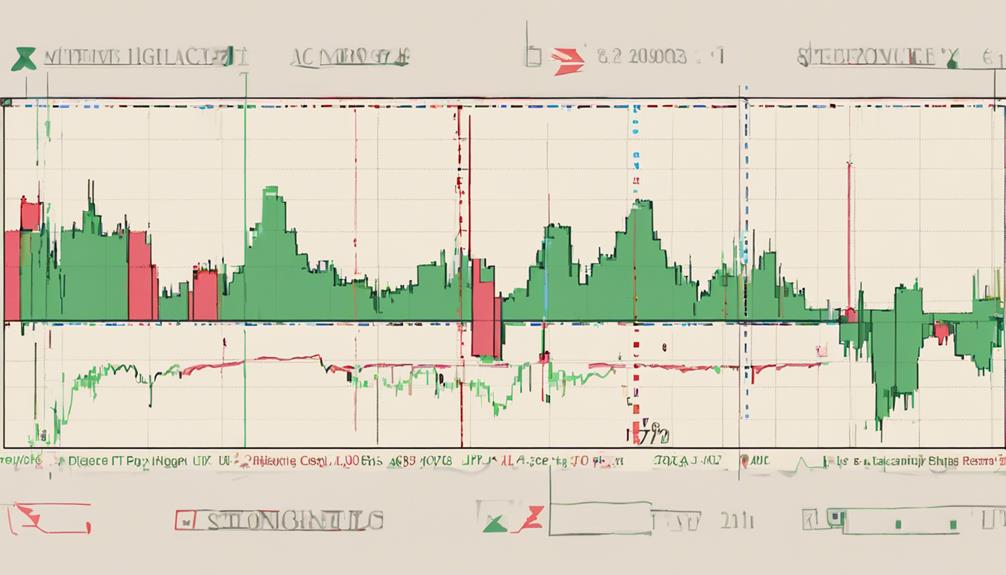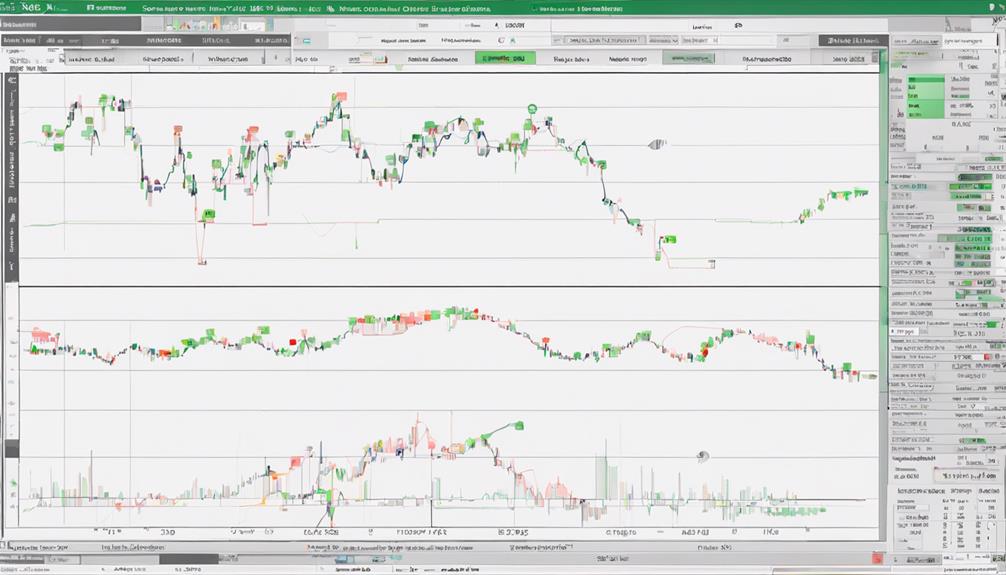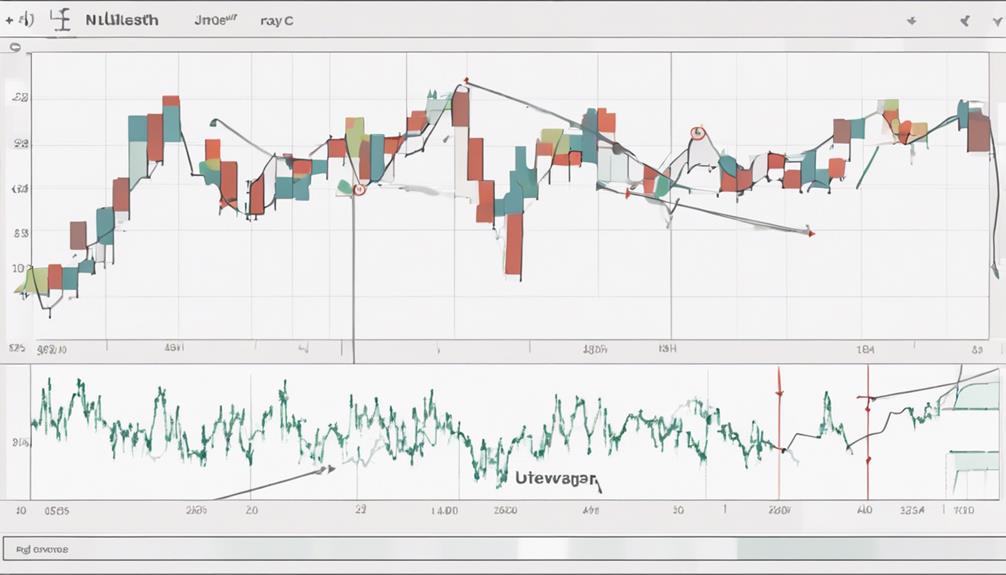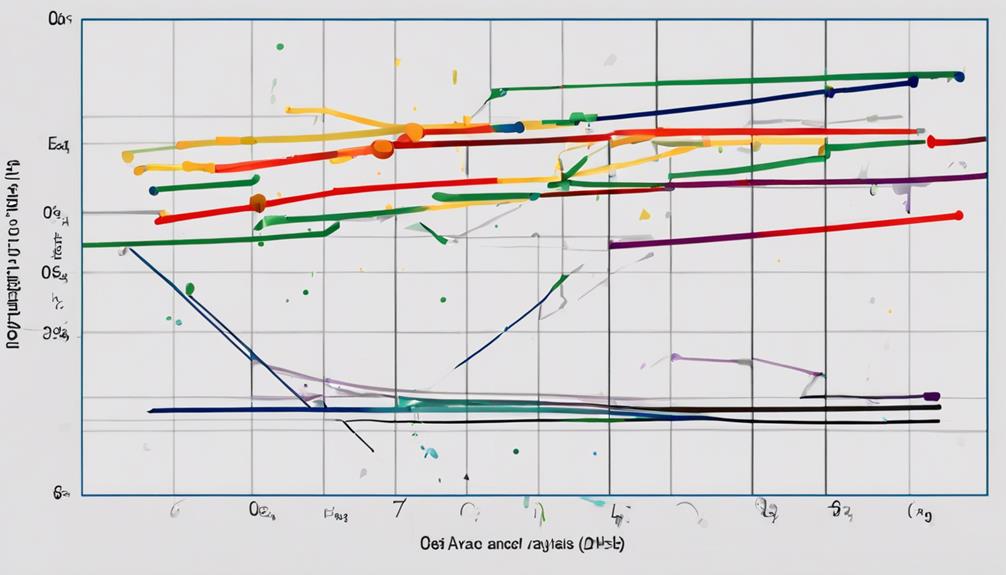Exploring the realm of ROC Indicator analysis unveils a multifaceted approach to understanding market dynamics. The calculation of price change velocity provides traders with valuable insights into potential market movements.
However, the true value lies in deciphering the intricate signals ROC generates to navigate the complexities of trading. Delving into the depths of ROC analysis reveals a world where precision meets intuition, offering a unique perspective on market behavior that can significantly impact trading outcomes.
The interplay between ROC and market trends presents a captivating puzzle waiting to be unraveled, shedding light on the path to profitable trading strategies.
Understanding Rate of Change Indicator
What fundamental principles underlie the Rate of Change Indicator (ROC) that make it a valuable tool for technical analysis in financial markets?
The Rate of Change Indicator, or ROC, calculates the rate at which a financial asset's price changes over a specified period, typically between the current close and a previous close. Positive ROC values indicate upward price movements, while negative values suggest price declines.
ROC serves as a momentum oscillator, reflecting the speed of price changes. This tool helps traders identify potential overbought and oversold conditions in the market. By analyzing ROC moves, traders can confirm trends, anticipate trend changes, and pinpoint divergence signals that may precede price reversals.
Unlike some oscillators, ROC does not have predefined overbought or oversold levels, making it versatile for various market conditions. Understanding the ROC indicator's dynamics is crucial for traders seeking to interpret price changes and make informed decisions based on momentum analysis.
Interpreting ROC Indicator Signals

Analyzing ROC Indicator signals provides traders with valuable insights into market momentum and potential trend shifts based on price changes over specific periods. When interpreting ROC Indicator signals, traders should consider the following key points:
- Positive ROC values indicate bullish momentum, showcasing a potential uptrend in the market, while negative values suggest bearish sentiment, indicating a possible downtrend.
- ROC signals play a crucial role in identifying potential trend changes and market reversals, helping traders anticipate shifts in market direction.
- Traders often look for ROC crossovers with the zero line as indications of new trends emerging, signaling entry or exit points in the market.
- Identifying overbought or oversold conditions based on prior extreme levels of ROC can assist traders in making informed decisions about potential market corrections or reversals.
In addition, divergences in ROC can provide valuable timing signals for market turning points, aiding traders in maximizing their trading opportunities. Understanding these interpretations is essential for effectively utilizing the ROC Indicator in trading strategies.
Applying ROC in Trading Strategies

Utilizing the Rate of Change (ROC) indicator in trading strategies involves strategically leveraging zero line crosses to identify potential shifts in market trends. Traders can use ROC to confirm breakouts, enhancing the probability of successful trades.
Moreover, divergences in the ROC indicator can be instrumental in timing market turning points, providing valuable insights into potential reversals or continuations. In ranging markets where price movements are limited, ROC can generate effective trading signals by detecting fluctuations around the zero line.
To further improve the accuracy of trades, traders often combine ROC with other indicators to identify confluence signals. By integrating ROC with complementary tools, traders can gain a more comprehensive understanding of market dynamics and make informed decisions.
ROC Indicator and Market Trends

Examining market trends through the lens of the ROC indicator provides traders with a quantitative means of assessing the speed and direction of price changes over a specified timeframe. This Technical analysis tool offers valuable insights into market dynamics and price movements.
Here are some key aspects related to ROC Indicator and Market Trends:
- Price Change Detection: ROC helps in identifying the rate of change in prices, indicating whether the market is experiencing an uptrend or a downtrend.
- Momentum Assessment: Traders can use ROC to gauge the momentum behind price movements, aiding in understanding the strength and sustainability of trends.
- Market Trend Confirmation: Positive ROC values can confirm an uptrend, while negative values signal a downtrend, assisting traders in making informed decisions.
- Divergence Detection: ROC analysis can reveal potential divergences between price and momentum, hinting at possible trend reversals or shifts in market direction.
Incorporating ROC Indicator in market trend analysis empowers traders to navigate the financial markets with a more informed and strategic approach.
Advanced Techniques for ROC Analysis

Enhancing ROC analysis through the implementation of advanced methodologies and techniques provides traders with a deeper understanding of market dynamics and price behavior. By comparing ROC values across different timeframes, such as 9-day and 14-day periods, traders can gain more insights into the percentage change in price and price momentum of the underlying asset.
Combining Price Rate of Change with other technical indicators like moving averages or trendlines can enhance the accuracy of signals and reduce false positives. Looking for ROC crossovers accompanied by significant volume spikes can strengthen the validity of trading signals in the current market environment.
Additionally, applying ROC analysis in conjunction with chart patterns such as triangles or wedges can help confirm breakout opportunities and potential trend reversals. These advanced techniques enable traders to make more informed decisions based on a comprehensive analysis of ROC values and their relationship with other market indicators.
What are the advanced strategies for analyzing the ROC indicator?
When analyzing the ROC indicator, using advanced strategies can help uncover deeper insights into market trends and potential entry and exit points. Techniques such as divergence analysis, incorporating multiple time frames, and combining the ROC indicator with other technical indicators can enhance its effectiveness in making informed trading decisions.
Frequently Asked Questions
What Does the ROC Indicator Tell You?
The ROC indicator informs traders about the speed of price changes in a security. Positive values signal bullish sentiment, negative values indicate bearish sentiment. It helps identify market conditions and potential reversals, aiding in trend analysis.
How Is the ROC Indicator Calculated?
The ROC indicator is derived by evaluating the difference between the current closing price and the closing price from a set number of periods prior, providing a percentage change that can help assess market momentum and potential shifts in trend direction.
What Is the Difference Between ROC and RSI Indicator?
The key difference between the ROC and RSI indicators lies in their focus: ROC emphasizes price momentum with values above or below zero, while RSI evaluates price strength on a scale from 0 to 100, indicating potential reversals.
What Is the Difference Between MACD and Roc?
The distinction between MACD and ROC lies in their focus: MACD identifies trend shifts with moving averages, while ROC gauges price momentum through percentage changes. MACD offers trend signals with visual elements, while ROC emphasizes price speed.
Conclusion
In conclusion, the Rate of Change (ROC) Indicator analysis provides valuable insights into market trends and potential trading opportunities. By measuring the speed of price changes and identifying overbought or oversold conditions, traders can make informed decisions to enter or exit positions.
As the saying goes, 'knowledge is power,' and utilizing ROC in conjunction with other technical analysis tools can enhance trading strategies and improve overall market performance.


